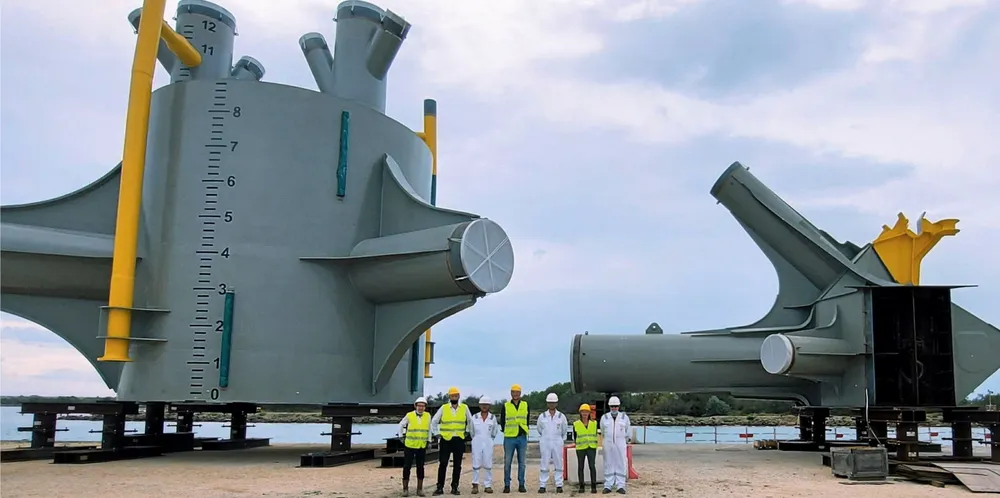Floating wind's gigascale future hinges on 'specially adapted' turbines: EDF project chief
Joanna Kluczewska-Bordier, lead on utility's 25MW PGL pilot off France, believes tomorrow's commercial projects will need new-look machines tailored to moored platforms and far-offshore operation

Turbine designs for floating wind units must begin to look beyond conventional three-bladed models if the sector is to accelerate its industrialisation and produce power optimally from far offshore sites in the future, the project lead on French utility EDF’s sector flagship said today (Wednesday), striking a light for new-look deepwater concepts coming into the market.
Joanna Kluczewska-Bordier said EDF’s experience building one of the four floating wind demonstrator arrays set to be moored off France in the near future, the 25MW Province Grand Large, led her to believe topmost among tests facing the industry now was developing wind turbines “specifically adapted” to floating hulls.
Doing so, she said, would help answer the other “key technical challenges” lying ahead for the sector: mass fabrication of units, fit-for-purpose harbours and construction infrastructure, and issues around componentry switch-out and maintenance offshore.
“Most of the basic technical challenges related to floating and turbine designs have already been well identified thanks to demonstrator projects and pilot wind farms,” said Kluczewska-Bordier, speaking on a World Forum Offshore Wind webinar.
“People are now generally convinced that floating wind works and… works well [at high capacity factors].”
“Today the nacelles are identical to fixed-bottom projects and this is sometimes a challenge in terms of… assembly [in port]. So it is important, I think, when we are talking about big, commercial scale [projects, that] wind turbines should be more and more adapted to floating,” she said.
“For PGL we found a proper way of installing the Siemens Gamesa turbines on SBM [tension leg platform (TLP)] floaters, but is a critical operation to be taken into account for any floater project.”
Turbine design should be rethought in the context of harbours “of the right size and capacity”, a supply chain “ready to go”, and those “new ways [that will be] found” to reduce running costs once a floating wind project is in operation, said Kluczewska-Bordier.
The three floaters for PGL, being assembled in Port Saint-Louis on the Mediterranean Sea, are slated to be installed in 100 metres of water some 14km offshore “later this year” as part of the first project in the world to employ so-called TLPs.
Industry observers have flagged that ‘specially adapted’ covered a wide spectrum of technologies, including modified towers and controller software as well as “two-bladed, VAWT solutions etc”.